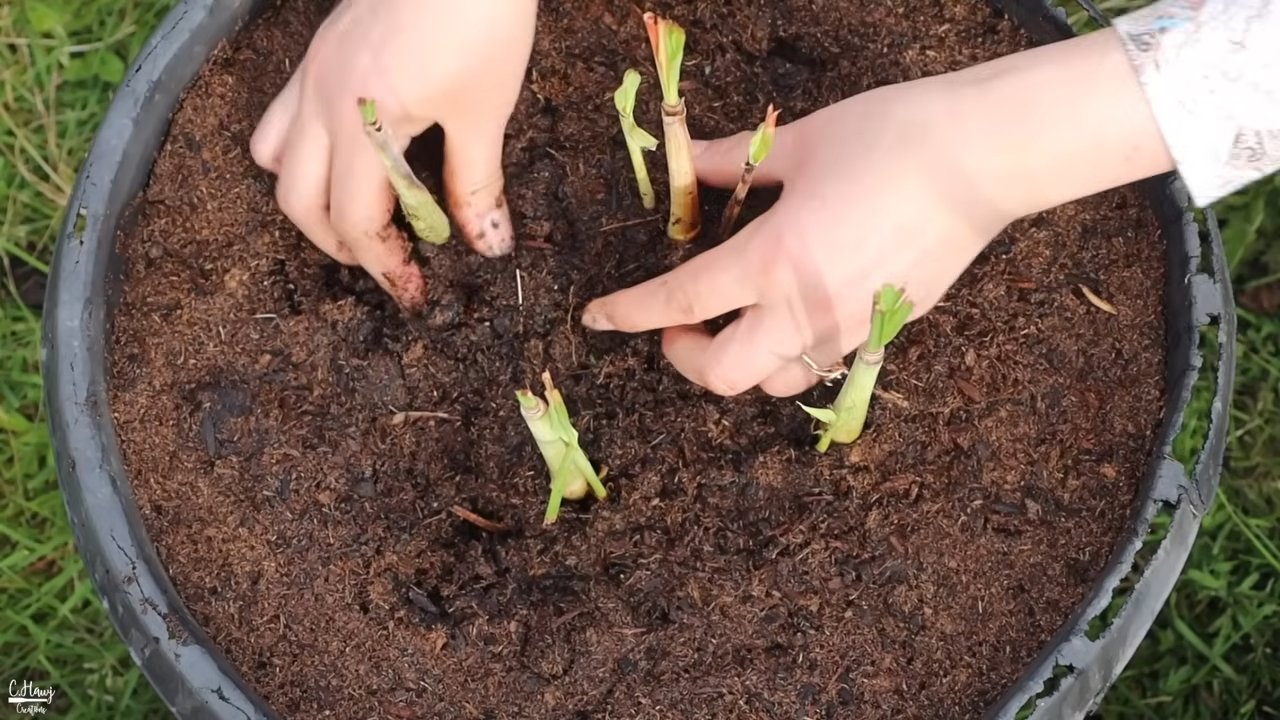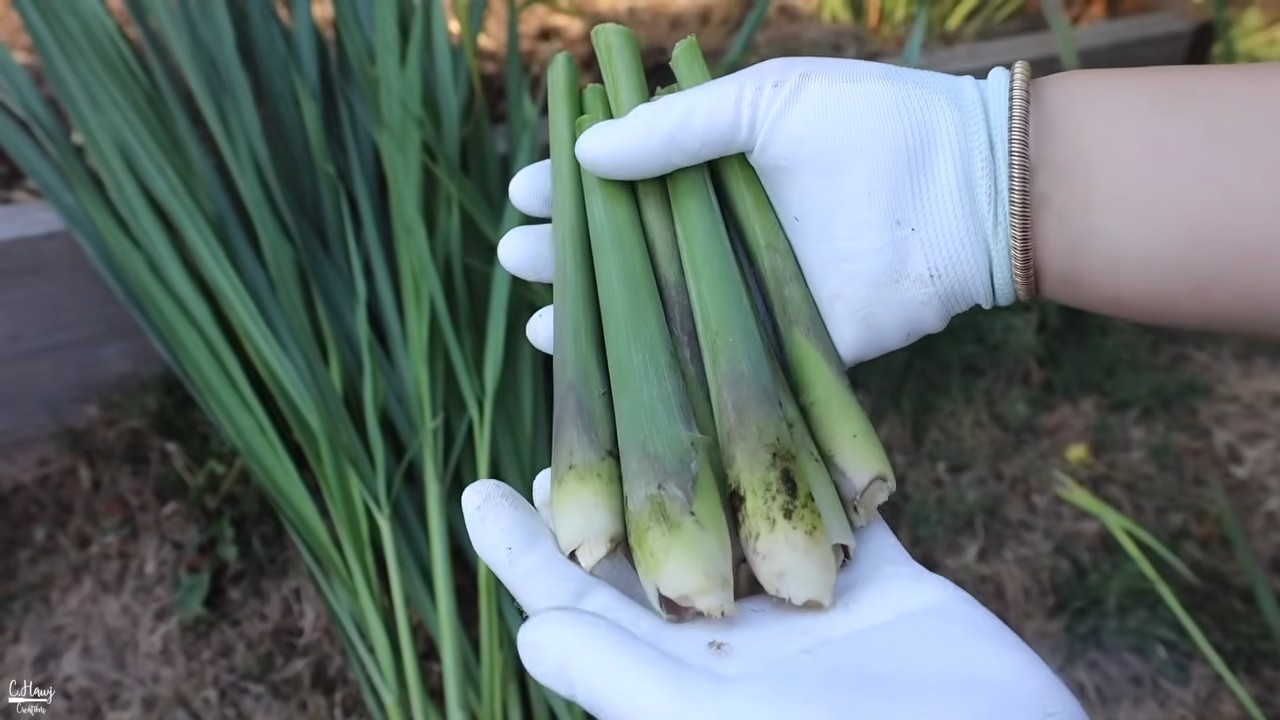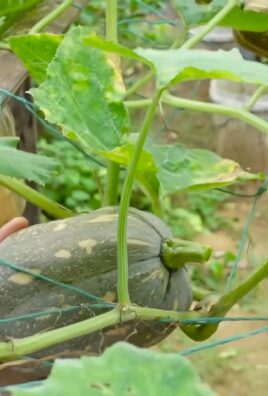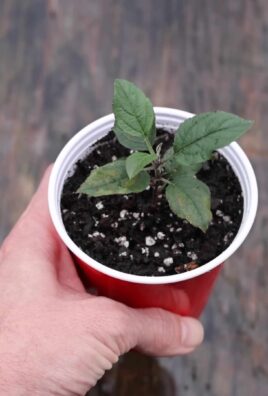Grow Lemongrass at Home: Imagine stepping outside your door and snipping fresh, fragrant lemongrass to add a zesty kick to your favorite Thai curry or a soothing cup of herbal tea. Sounds dreamy, right? Well, it doesn’t have to be just a dream! This incredibly versatile herb, known for its distinctive citrusy aroma and flavor, is surprisingly easy to cultivate right in your own backyard or even on a sunny windowsill.
Lemongrass, with its origins deeply rooted in Southeast Asian cuisine and traditional medicine, has been used for centuries not only for its culinary properties but also for its potential health benefits. From warding off insects to aiding digestion, this humble grass packs a powerful punch. But let’s be honest, constantly buying lemongrass from the grocery store can be both expensive and inconvenient. Plus, you’re never quite sure how fresh it is!
That’s where our DIY guide comes in! I’m going to show you simple, effective tricks and hacks to grow lemongrass at home, regardless of your gardening experience. Whether you’re a seasoned green thumb or a complete beginner, I’ll walk you through everything you need to know, from choosing the right variety to providing the perfect growing conditions. Get ready to enjoy a continuous supply of fresh, flavorful lemongrass, all thanks to your own green efforts!

Grow Your Own Lemongrass Oasis: A DIY Guide
Hey there, fellow plant enthusiasts! Ever dreamt of having fresh, fragrant lemongrass right at your fingertips? Well, dream no more! Growing lemongrass at home is surprisingly easy and rewarding. Not only will you have a constant supply for delicious Thai curries and soothing teas, but you’ll also enjoy the plant’s beautiful, architectural presence. Let’s dive into how you can cultivate your own lemongrass haven.
Choosing Your Lemongrass Starting Point
Before we get our hands dirty, let’s talk about where to get your lemongrass. You have a few options:
* Grocery Store Stalks: This is the most common and budget-friendly method. Look for lemongrass stalks at your local Asian grocery store or even some well-stocked supermarkets. Choose stalks that are firm, healthy-looking, and have a bulbous base. Avoid any that are dried out, mushy, or have signs of mold.
* Lemongrass Plant from a Nursery: If you want a head start, you can purchase a small lemongrass plant from a nursery or garden center. This option is a bit more expensive, but it guarantees a healthy and established plant.
* Cuttings from a Friend: If you know someone who already grows lemongrass, ask if they’d be willing to share a cutting. This is a great way to propagate new plants from an existing source.
Rooting Lemongrass Stalks in Water
This is where the magic begins! We’re going to coax those grocery store stalks into sprouting roots.
1. Prepare the Stalks: Trim the top of the lemongrass stalks, leaving about 4-5 inches of the base. Remove any dry or damaged outer leaves, revealing the fresh, green core.
2. Find a Suitable Container: Choose a glass or jar that’s tall enough to support the stalks upright. A mason jar or a recycled glass bottle works perfectly.
3. Add Water: Fill the container with fresh, clean water. Make sure the water level covers the bottom 2-3 inches of the stalks.
4. Place the Stalks in Water: Arrange the lemongrass stalks in the container, ensuring the base is submerged in water. Don’t overcrowd the container; give each stalk some space.
5. Find a Sunny Spot: Place the container in a warm, sunny location. A windowsill that receives bright, indirect sunlight is ideal.
6. Change the Water Regularly: Change the water every 1-2 days to prevent bacteria growth and keep the water fresh. This is crucial for successful rooting.
7. Be Patient: It usually takes about 2-3 weeks for roots to emerge. You’ll start to see small, white roots sprouting from the base of the stalks. Don’t be discouraged if it takes a little longer; just keep changing the water and providing sunlight.
Planting Your Rooted Lemongrass
Once your lemongrass stalks have developed a good network of roots (at least an inch or two long), it’s time to transplant them into soil.
1. Choose the Right Pot (or Garden Spot): Lemongrass thrives in well-draining soil and needs plenty of sunlight. If you’re planting in a pot, choose a large container (at least 12 inches in diameter) with drainage holes. If you’re planting in the garden, select a sunny spot with fertile, well-drained soil.
2. Prepare the Soil: Use a high-quality potting mix for containers or amend your garden soil with compost or other organic matter to improve drainage and fertility. Lemongrass prefers slightly acidic soil.
3. Dig a Hole: Dig a hole in the soil that’s large enough to accommodate the root ball of the lemongrass stalk.
4. Carefully Remove the Stalk: Gently remove the rooted lemongrass stalk from the water. Be careful not to damage the delicate roots.
5. Plant the Lemongrass: Place the lemongrass stalk in the hole, ensuring the top of the root ball is level with the surrounding soil.
6. Fill the Hole: Fill the hole with soil, gently firming it around the base of the plant.
7. Water Thoroughly: Water the newly planted lemongrass thoroughly to help settle the soil and encourage root growth.
Caring for Your Lemongrass Plant
Now that your lemongrass is planted, it’s time to provide the care it needs to thrive.
* Sunlight: Lemongrass needs at least 6 hours of direct sunlight per day. If you’re growing it indoors, place it near a sunny window or supplement with a grow light.
* Watering: Water your lemongrass regularly, especially during hot, dry weather. Keep the soil consistently moist, but avoid overwatering, which can lead to root rot. Check the soil moisture by sticking your finger into the soil; if it feels dry an inch or two below the surface, it’s time to water.
* Fertilizing: Feed your lemongrass plant every 2-3 weeks during the growing season (spring and summer) with a balanced liquid fertilizer. Follow the instructions on the fertilizer label.
* Pruning: Prune your lemongrass plant regularly to encourage new growth and prevent it from becoming too leggy. Trim off any dead or brown leaves. You can also harvest stalks as needed for cooking or tea.
* Overwintering: Lemongrass is a tropical plant and is not frost-hardy. If you live in a cold climate, you’ll need to bring your lemongrass plant indoors before the first frost. Place it in a sunny location and reduce watering during the winter months. You can also cut back the foliage to about 6 inches to conserve energy.
Harvesting Your Lemongrass
The best part! Harvesting your own homegrown lemongrass.
1. When to Harvest: You can start harvesting lemongrass stalks when they are at least 1/2 inch in diameter and about 12 inches tall.
2. How to Harvest: Use a sharp knife or pruning shears to cut the stalks near the base of the plant.
3. Using Your Harvest: Use the fresh lemongrass stalks in your favorite recipes or dry them for later use. To dry lemongrass, simply hang the stalks upside down in a cool, dry place until they are completely dry.
Troubleshooting Common Lemongrass Problems
Even with the best care, you might encounter a few challenges along the way. Here are some common problems and how to address them:
* Yellowing Leaves: Yellowing leaves can be caused by several factors, including overwatering, underwatering, nutrient deficiencies, or pests. Check the soil moisture and adjust your watering accordingly. Fertilize your plant with a balanced fertilizer. Inspect the leaves for signs of pests, such as aphids or spider mites.
* Brown Leaf Tips: Brown leaf tips are often caused by dry air or inconsistent watering. Increase humidity around the plant by misting it regularly or placing it on a pebble tray filled with water. Ensure you’re watering consistently and deeply.
* Slow Growth: Slow growth can be caused by insufficient sunlight, poor soil, or lack of nutrients. Ensure your lemongrass plant is receiving at least 6 hours of direct sunlight per day. Amend the soil with compost or other organic matter to improve fertility. Fertilize your plant regularly during the growing season.
* Pests: Lemongrass is generally pest-resistant, but it can occasionally be affected by aphids, spider mites, or mealybugs. Inspect your plant regularly for signs of pests. If you find any, treat them with insecticidal soap or neem oil.
Propagating Lemongrass
Want more lemongrass? Propagating is easy!
* Division: The easiest way to propagate lemongrass is by division. In the spring, carefully dig up the plant and divide the root ball into smaller clumps. Each clump should have several stalks and a healthy root system. Replant the clumps in separate pots or in the garden.
* Cuttings: You can also propagate lemongrass from cuttings. Take cuttings from healthy stalks that are at least 6 inches long. Remove the lower leaves and place the cuttings in water, as described above for rooting grocery store stalks. Once the cuttings have developed roots, plant them in soil.
Enjoying Your Homegrown Lemongrass
Now that you’ve successfully grown your own lemongrass, it’s time to enjoy the fruits (or rather, stalks) of your labor! Here are just a few ways to use your homegrown lemongrass:
* Thai Curries: Lemongrass is a key ingredient in many Thai curries, adding a bright, citrusy flavor.
* Soups and Stews: Add lemongrass to soups and stews for a fragrant and flavorful boost.
* Teas: Steep fresh or dried lemongrass in hot water to make a soothing and refreshing tea.
* Marinades: Use lemongrass in marinades for chicken, fish, or tofu.
* Insect Repellent: Lemongrass has natural insect-repelling properties. Plant it around your patio or garden to help keep mosquitoes away. You can also crush the leaves and rub them on your skin as a natural insect repellent.
Growing lemongrass

Conclusion
So, there you have it! Growing lemongrass at home is not only achievable, but it’s also incredibly rewarding. Imagine stepping into your kitchen and having fresh, fragrant lemongrass readily available for all your culinary adventures. No more last-minute trips to the grocery store or settling for dried, less flavorful substitutes. This simple DIY trick empowers you to cultivate your own supply of this versatile herb, adding a vibrant, citrusy zest to your dishes.
But the benefits extend beyond just convenience. By growing your own lemongrass, you’re also ensuring that you have access to a pesticide-free, organically grown ingredient. You know exactly where it came from and how it was nurtured, giving you peace of mind and a healthier option for your family. Plus, the act of gardening itself is incredibly therapeutic, providing a calming and grounding experience that can help reduce stress and improve your overall well-being.
Why is this a must-try? Because it’s easy, cost-effective, and yields a continuous supply of fresh lemongrass. You’re not just growing an herb; you’re cultivating a sustainable source of flavor and fragrance right in your own home.
Looking for variations? Consider experimenting with different containers. While a standard pot works perfectly well, you could also try using a raised garden bed or even incorporating lemongrass into a larger herb garden. You can also explore different varieties of lemongrass, such as the East Indian or West Indian types, each offering slightly different flavor profiles. Some gardeners even find success growing lemongrass hydroponically, offering a unique and space-saving alternative.
Don’t be afraid to get creative and adapt the process to suit your own needs and preferences. The key is to provide your lemongrass with plenty of sunlight, well-draining soil, and consistent moisture. With a little bit of care and attention, you’ll be rewarded with a thriving plant that will provide you with fresh lemongrass for months to come.
We wholeheartedly encourage you to give this DIY trick a try. It’s a simple yet impactful way to elevate your cooking, connect with nature, and enjoy the many benefits of growing your own herbs. Once you’ve experienced the joy of harvesting your own fresh lemongrass, you’ll never want to go back to store-bought again.
We’re eager to hear about your experiences! Share your photos, tips, and stories in the comments below. Let’s create a community of lemongrass enthusiasts and inspire others to embark on this rewarding gardening journey. Happy growing!
Frequently Asked Questions (FAQ)
What kind of soil is best for growing lemongrass?
Lemongrass thrives in well-draining soil that is rich in organic matter. A sandy loam is ideal, but you can also amend regular potting soil with compost or other organic materials to improve drainage and fertility. Avoid heavy clay soils, as they can retain too much moisture and lead to root rot. A slightly acidic to neutral pH (around 6.0 to 7.0) is also preferred. Consider adding perlite or vermiculite to your soil mix to further enhance drainage.
How much sunlight does lemongrass need?
Lemongrass is a sun-loving plant and requires at least 6-8 hours of direct sunlight per day to thrive. If you’re growing it indoors, place it near a sunny window that receives ample sunlight. If you don’t have enough natural light, you can supplement with grow lights. Insufficient sunlight can result in leggy growth and reduced flavor intensity.
How often should I water my lemongrass?
Lemongrass needs consistent moisture, especially during the growing season. Water deeply whenever the top inch of soil feels dry to the touch. Avoid overwatering, as this can lead to root rot. During the cooler months, you can reduce watering frequency. Ensure that your pot has drainage holes to prevent water from accumulating at the bottom.
Can I grow lemongrass from store-bought stalks?
Yes, you can absolutely grow lemongrass from store-bought stalks! This is the most common and easiest method for propagation. Choose stalks that are firm, healthy-looking, and have a bulbous base. Place the stalks in a glass of water, ensuring that the base is submerged. Change the water every day or two. Within a week or two, you should see roots emerging. Once the roots are a few inches long, you can plant the stalks in a pot with well-draining soil.
How do I harvest lemongrass?
To harvest lemongrass, simply cut the stalks near the base of the plant, about an inch or two above the soil line. You can harvest individual stalks as needed, or you can harvest the entire plant at once. The lower, thicker portion of the stalk is the most flavorful and is typically used in cooking. The upper, greener portion can also be used to make tea.
Is lemongrass a perennial or an annual?
Lemongrass is a perennial in warm climates (USDA zones 9-11), meaning it will live for multiple years. In colder climates, it is typically grown as an annual, as it cannot tolerate freezing temperatures. However, you can overwinter lemongrass indoors by bringing it inside before the first frost and providing it with adequate light and water.
How do I overwinter lemongrass indoors?
Before the first frost, dig up your lemongrass plant and pot it in a container with well-draining soil. Cut back the foliage to about 6 inches. Place the pot in a sunny location indoors, such as near a south-facing window. Water sparingly, allowing the soil to dry out slightly between waterings. You can also supplement with grow lights if needed. In the spring, once the danger of frost has passed, you can gradually acclimate the plant to outdoor conditions before replanting it in the garden.
What are some common pests and diseases that affect lemongrass?
Lemongrass is generally pest-resistant, but it can occasionally be affected by aphids, spider mites, or scale insects. These pests can be controlled with insecticidal soap or neem oil. Root rot is the most common disease that affects lemongrass, and it is usually caused by overwatering or poor drainage. To prevent root rot, ensure that your soil is well-draining and avoid overwatering.
Can I grow lemongrass in a container?
Yes, lemongrass grows very well in containers. Choose a pot that is at least 12 inches in diameter to allow for adequate root growth. Ensure that the pot has drainage holes to prevent water from accumulating at the bottom. Use a well-draining potting mix and provide your lemongrass with plenty of sunlight and water.
What are the culinary uses of lemongrass?
Lemongrass is a versatile herb that is used in a wide variety of cuisines, particularly Southeast Asian cuisine. It has a citrusy, slightly sweet flavor that pairs well with seafood, poultry, vegetables, and soups. It can be used fresh, dried, or frozen. To use fresh lemongrass, bruise the stalk to release its flavor and then add it to your dish. You can also chop or mince the stalk and add it directly to your recipe. Lemongrass is also commonly used to make tea.





Leave a Comment